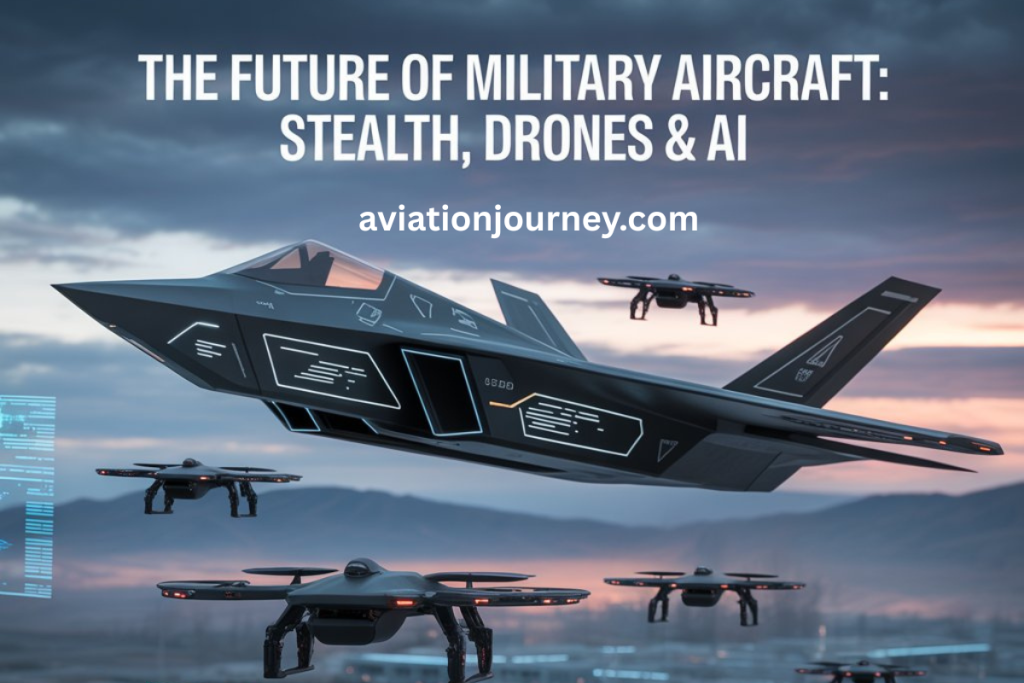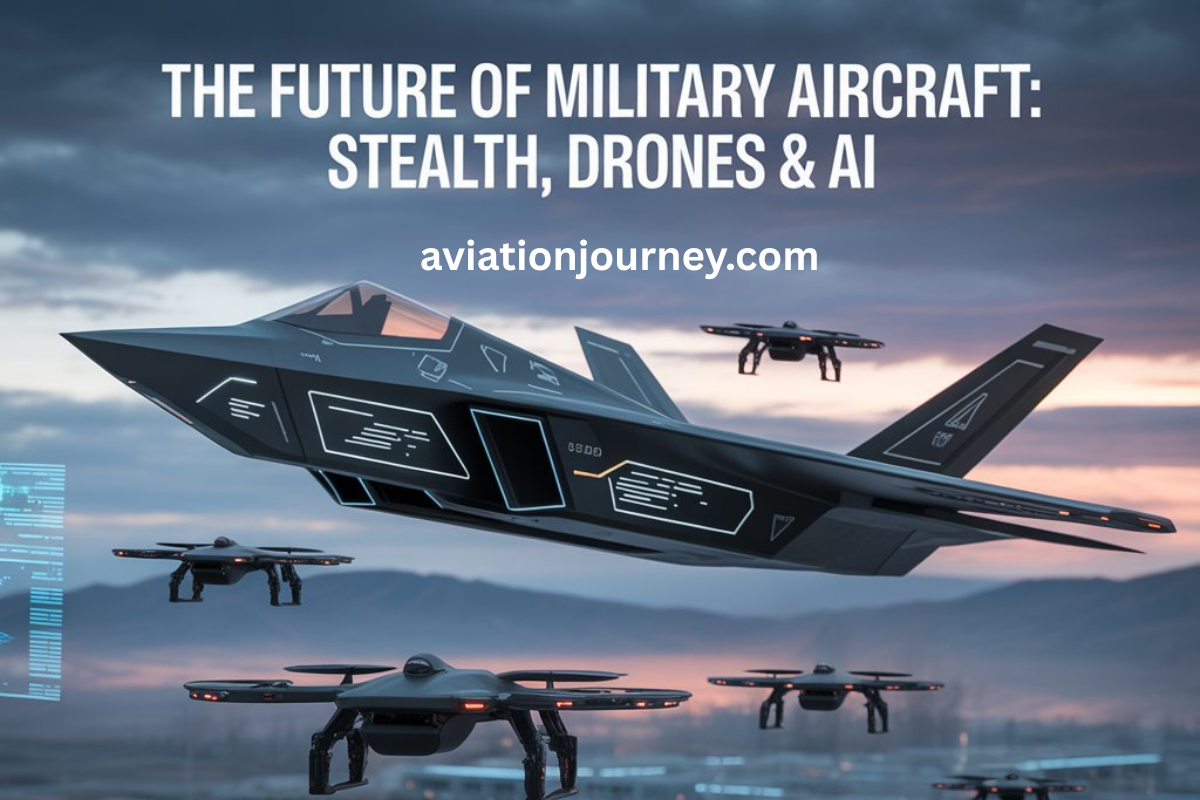The Future of Military Aircraft: Stealth, Drones & AI

Military aviation has always shaped the balance of global power. From the first fighter planes in World War I to today’s stealth jets, innovation has been the key to staying ahead. As we look to the future, stealth technology, drones, and artificial intelligence (AI) are redefining how nations defend themselves and project power.
Stealth: Staying Invisible in the Skies
Stealth aircraft are designed to avoid radar detection, giving militaries a critical edge in combat. Jets like the F-35 Lightning II and China’s J-20 already demonstrate how advanced radar-absorbing materials and unique designs make detection nearly impossible.
Future advancements aim to make stealth aircraft even more invisible—not only to radar but also to infrared and sound-tracking systems. This will allow nations to strike faster and safer, reducing pilot risk and maximizing efficiency in modern warfare.
Drones: The Rise of Unmanned Power
Unmanned Aerial Vehicles (UAVs) are no longer limited to reconnaissance. Today, drones like MQ-9 Reapers and Bayraktar TB2s can strike targets, carry surveillance gear, and operate in environments too dangerous for manned aircraft.
In the future, swarms of drones may overwhelm enemy defenses, work alongside fighter jets, and conduct autonomous missions. Drones will also lower operational costs since they don’t require human pilots, extensive training, or the same level of onboard safety features.
Artificial Intelligence: The New Pilot in the Sky
AI is changing the very definition of air combat. With advanced machine learning, AI systems can process data faster than humans, making split-second decisions in high-pressure situations.
For example, AI copilots are being tested to assist with navigation, targeting, and threat analysis. In the near future, AI may fly entire aircraft independently, coordinating missions across fleets and controlling drone swarms.
AI-driven aircraft could also reduce human fatigue and error while optimizing performance, creating a new era where machines and humans fight side by side.
Sustainability and Efficiency in Military Aviation
Beyond combat, the future of military aviation also considers efficiency and environmental impact. Nations are investing in hybrid engines, renewable fuels, and lighter materials to reduce emissions and extend operational range. While warplanes remain powerful tools, sustainability is becoming an essential part of global defense planning.
Challenges Ahead
While these technologies offer unmatched advantages, they also raise serious challenges. Cybersecurity is a major concern, as AI-powered jets and drones could be vulnerable to hacking. Ethical questions about autonomous weapons—machines making life-and-death decisions—are also growing. Nations must balance innovation with responsibility, ensuring that advanced aircraft are used to enhance security, not destabilize it.
Final Thoughts
The future of military aircraft is not just about speed or firepower—it’s about intelligence, invisibility, and efficiency. Stealth jets will remain vital, drones will dominate the skies, and AI will transform how missions are executed.
As countries invest in these technologies, the battlefield of tomorrow will be faster, smarter, and more complex than ever before. One thing is certain: air power will continue to define global security in the 21st century.

